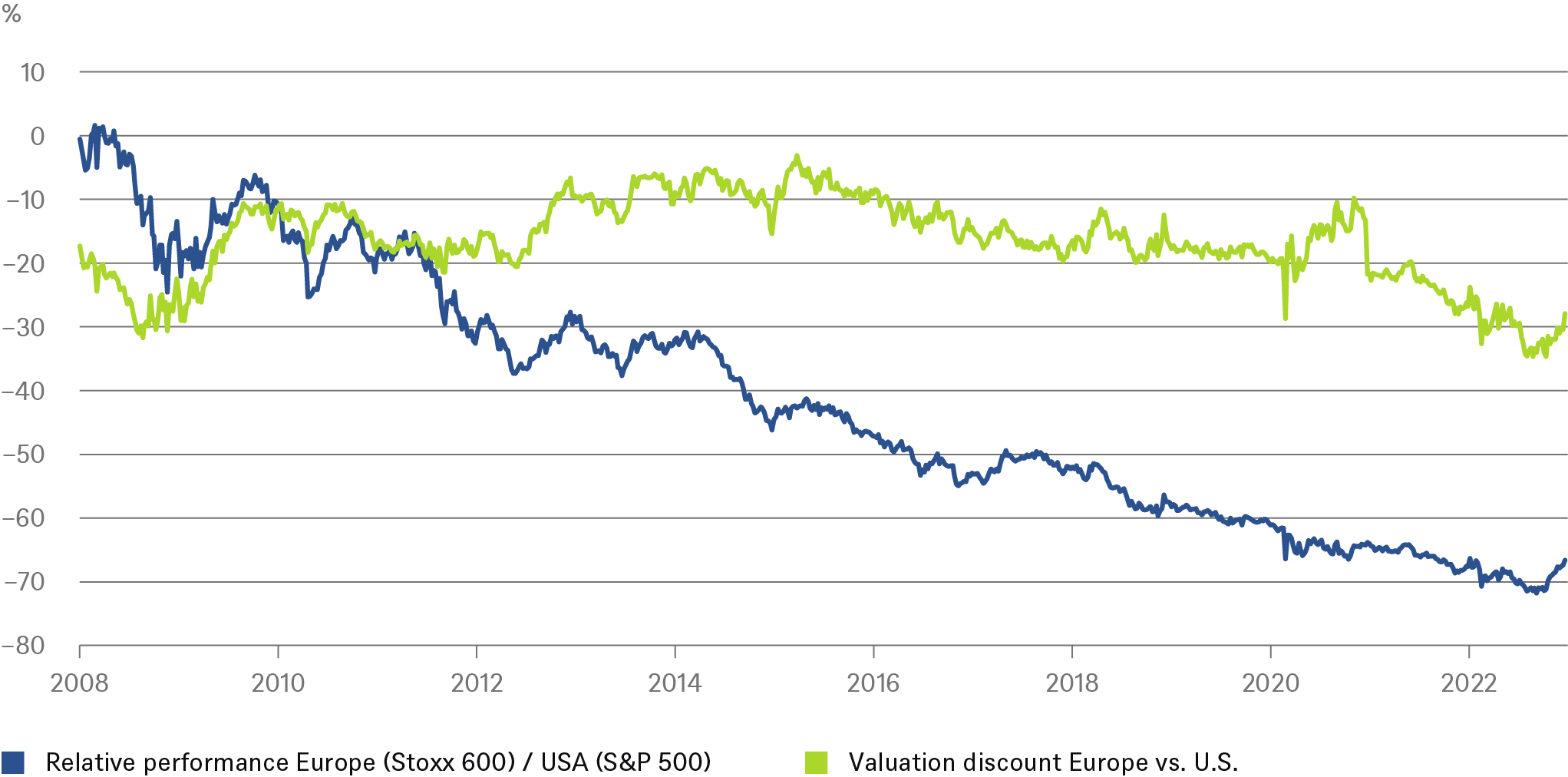- Home »
- Insights »
- Global CIO View »
- Chart of the Week »
- Europe’s relative strength
Relative performance Stoxx 600/ S&P 500 and the transatlantic valuation discount

Sources: Bloomberg Finance L.P., DWS Investment GmbH as of 1/11/23
There were good reasons for this beyond the often-cited supposed "greater dynamism" of the U.S. economy. Technology stocks, prominent in the U.S., have shown strong growth and their valuations, like that of all growth stocks, have benefited particularly strongly from the low interest rate environment of the past decade and a half. But the central banks are now reminding us almost daily that the low interest rate era is over and will not return in the foreseeable future. That this plays into the hands of more value-heavy European equity markets is only one of the reasons why we believe European outperformance could be set to continue.
The higher weighting of defensive stocks in Europe is also an advantage in a year in which we expect a mild recession. At the same time, an earlier-than-anticipated boom in China is looming as a result of the end of the Covid restrictions – even if this is only likely to appear in the economic data in a few months' time. Europe benefits more than the U.S. from exports to China. Of course, Europe is also benefiting from low expectations, especially after Russia's invasion. But the energy crisis has been less severe than feared and the economy is performing better than hoped.[1]
This has also meant that earnings estimates for listed companies in Europe have not had to be revised as much as in the U.S. One reason being that Europe’s financial sector is benefiting even more from the turn in interest rates, as its profits had been depressed by lower and even negative rates.
In our view, however, institutional investors are still under-positioned in Europe and remain quite cautious. This is ultimately also reflected in valuations. Despite a slight recovery, Europe’s discount compared to the valuation of U.S. stocks is still close to a record high with 28%. Here, too, the longer-term picture in our chart shows that there remains a lot of room for improvement.
None of this, however, should obscure the structural challenges facing Europe. In our study, "A Framework for European Transformation"[2], we take a closer look at the opportunities and risks that Europe faces ahead of the decarbonization of its economy.


